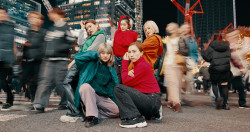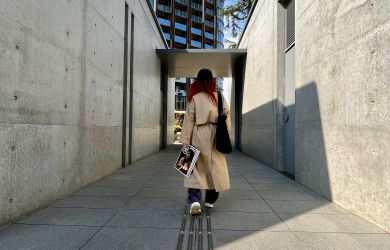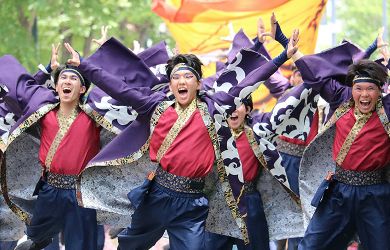
Originally published on metropolis.co.jp on June 2011

Photography: Hiroshi Manaka (tiimu)

Hiroshi Manaka (tiimu)

Courtesy of Japan Balloon Artists Network Office / Emily’s Balloon
The bubbling culture of balloon art in Japan deserves more awareness than it gets. These versatile toys, which can turn into anything with the magical twist of an artist’s hand, make everyone—minus globophobics—smile.
“After seeing how delighted my sick grandmother was when I gave her a balloon dog,” explains ex-flower shop employee Rie Hosokai, aka Daisy, “I decided I had to learn more.” The inflatable flexible bags have since made her into a world-renowned artist. After witnessing a French twister experiment with balloon costumes at a world convention, Daisy was inspired. A year later in 2006, she won the first ever international balloon fashion contest, at the Millennium Jam in Belgium.
Her process is simple. “First I do a sketch,” she says. “It depends on the size and detail of the dress, but it takes about a whole day on average to complete. If it is a bigger piece that uses up several hundred balloons, I stay up all night—because these things shrink.”
In a country where kado (Japanese flower arrangement) has a long religious tradition, air-filled synthetic ornaments do not tend to be the chosen embellishment at celebrations. But Daisy feels that “the culture is slowly but surely penetrating into society.” Today she is receiving requests to decorate wedding halls. But balloonage at nuptial events is not just limited to the décor. “No one actually wore balloons six years ago,” says Daisy, “but now more and more brides are ordering one-of-a-kind gowns, which can cost as much as conventional dresses.”
Such avant-garde fashion is another imported culture rapidly undergoing Japanization. Check out the award-winning—and totally wearable—Sempertex kimono (top right), exquisitely woven by Yuka Yamakita.
“I find kimonos more difficult to make because there are many intricate parts,” says Yamakita, who started twisting as a hobby seven years ago.
Metropolis traveled to Shizuoka to attend the eighth Japan Balloon Twisters Convention. In contrast to the bubbly feeling one might have expected, the tense atmosphere behind the scenes, where artists hurriedly crafted their tubes against a pressurized three-hour time limit, was too much for this reporter to handle. Outdoors was more bearable, with children and adults alike laughing at clown performances.
While balloon art for some is about making extravagant things to impress, for others it is only one of many elements to make a show successful. In a large room where anyone was free to blow up their own balloons, it worked as an effective tool to bridge gaps of gender, age, skill and other differences between people.
Those who missed the Twisters Convention still have the chance to go to the Japan Balloon Artists Network (JBAN)’s 15th convention. The largest festival in Japan, it serves as a venue for over 600 balloon artists and performers from around the world to interact and compete with each other. The event is open to the general public for free at Shin-Yokohama Hotel from July 26-28. Themed “Smile for All,” a whole floor will be dedicated to the tsunami relief charity effort. You can expect spectacular performances, giveaways, twisting classes, shops and enormous balloon sculptures.
The ultimate goal is to spread this relatively new culture in Japan. “Despite the advanced level of the artists in Japan, many people still don’t know about it,” says Ryuichi Sannohe, a wholesale executive at Emily’s Balloon, organizer of JBAN. “Perhaps it’s because fusen [balloons] aren’t a common part of people’s everyday lives, nor are they readily available everywhere in Japan.”
However, thanks to Emily’s Balloon’s English-friendly retail shop, Tuxedo Bear in Nishi-Azabu—the first of its kind in Japan since 1986—not only can you purchase balloons, but you can also take twisting classes and order customized party decorations.
Emily’s Balloon has also donated hundreds of thousands of colorful balloons printed with the kanji for fukko, or “recovery,” to over 150 tsunami relief groups across the nation.
“Nobody frowns when they get a balloon, whether child or adult. They have that power to make people smile,” says Sannohe. “Anyway—it is the least we can do.”







